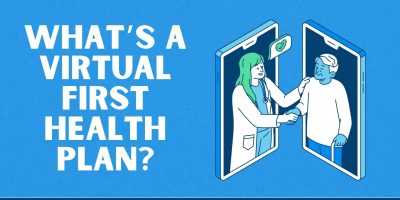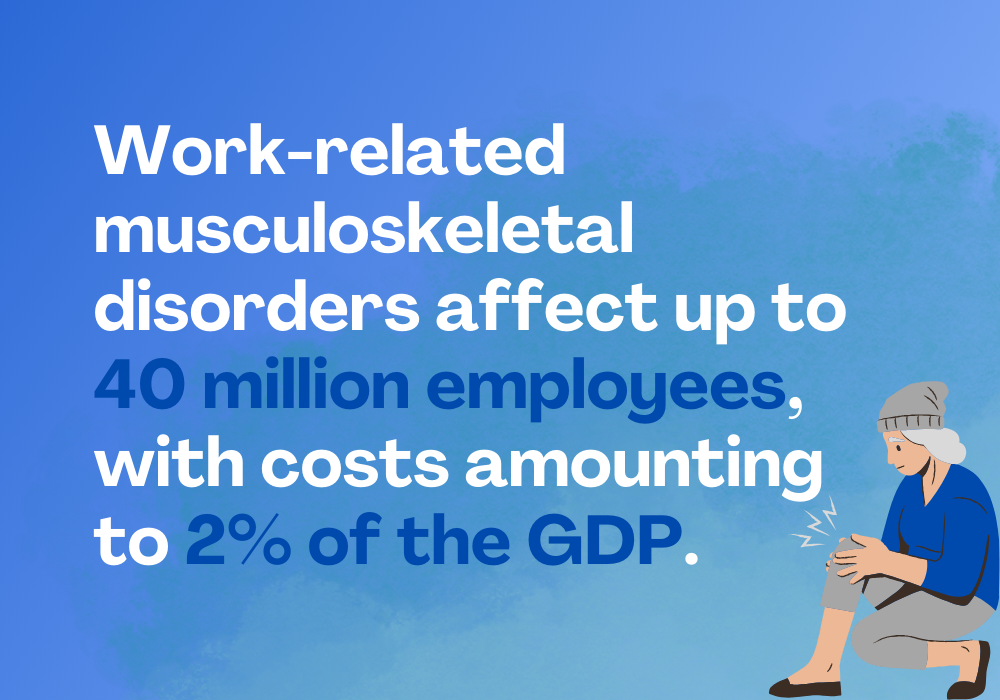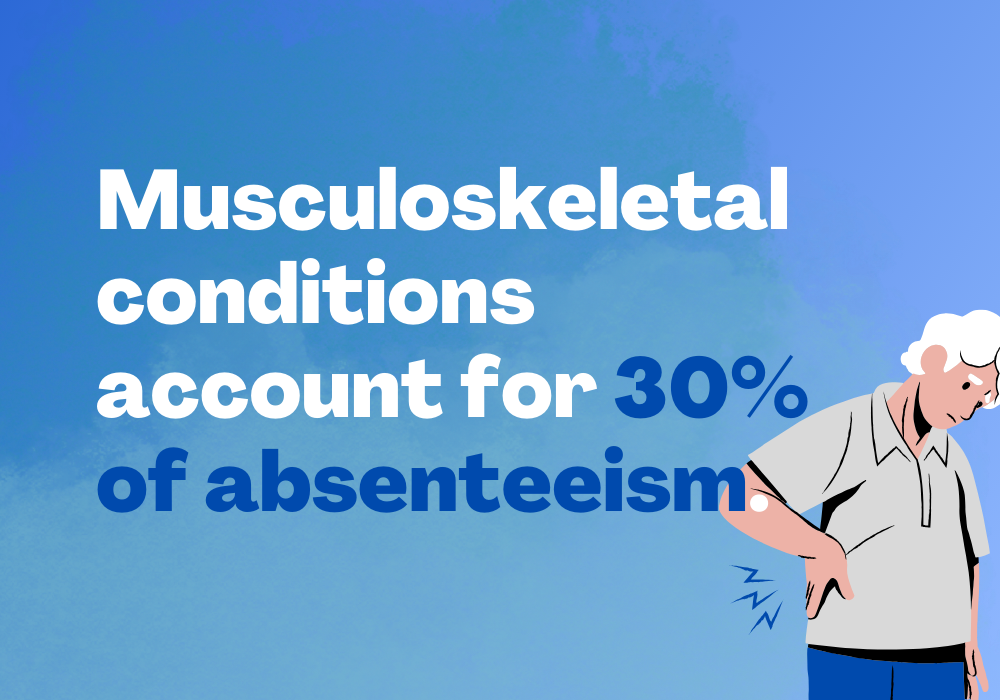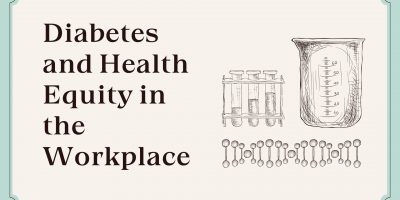
What’s a Virtual First Health Plan?
As virtual-first health plans continue to evolve, healthcare providers must adapt to changing care delivery models and embrace the opportunities and challenges of providing care in a virtual setting.


Founder of Family Chiropractic and Functional Medicine at Back in Balance Health

MD, FAAOS & Clinical Director of Hand Surgery at Holy Name Medical Center

PT, DPT, CFMT, and Assistant Professor at School of Physical Therapy, Regis University
More than 1.7 billion people live with a musculoskeletal condition.
The World Health Organization (WHO) classifies them as the biggest contributor to those living with a disability. Lower back pain seems to be the most prevalent, followed by fractures, osteoarthritis, neck pain, etc.
As an inseparable part of our lives, the workforce largely affects the onset or worsening of some of these conditions.
For example, bad posture, repetitive movements, and physically demanding tasks all lead to work-related musculoskeletal disorders (WMSD), including muscle strains, back injuries and back pain, Carpal Tunnel Syndrome (CTS), Tendinitis, etc.
Failure to address them creates many challenges for employees and employers. Severe health implications, hefty medical bills, and increased absenteeism are just the tip of the iceberg.
Thus, to better understand their prevalence, impact, and potential solutions, this Shortlister article explores the most common cases and factors leading to WMSDs.
Musculoskeletal disorders (MSD) are health conditions affecting muscles, tendons, nerves, joints, spinal discs, and other parts of the musculoskeletal system. When the workplace causes or influences these injuries and disorders, we refer to them as work-related musculoskeletal disorders.
Terms like “ergonomic injuries,” “accumulative trauma disorders,” or “overuse syndrome” are all used synonymously. However, since it’s such a broad categorization, they fail to illustrate it accurately.
Hence, WMSD has become the umbrella term.
Musculoskeletal conditions affect many jobs and industries, from office work to manufacturing, healthcare, and construction. They are usually triggered by specific movements, for example, twisting or bending arms or prolonged clenching.
Disregarding or misdiagnosing these conditions can have serious health repercussions for employees and financial ones for employers.
Thus, it’s essential to recognize the intricate aspects of WMSDs to understand their connection to employee health and overall organizational wellbeing.
WMSD effects expand beyond physical discomfort at work.
When left untreated, they can lead to temporary or permanent disabilities, accompanied by chronic pain as one of the symptoms.
Moreover, work-related musculoskeletal disorders are major contributors to poor productivity and high absenteeism. One study exploring the economic burden of these conditions in Europe shows that musculoskeletal conditions are the leading cause of absenteeism and presentism.
They affect up to 40 million employees, with costs amounting to 2% of the GDP.
At the same time, treatment and rehabilitation can result in higher healthcare costs for both employees and employers, especially when they develop into chronic conditions or lead to disabilities.
Now, let’s dissect these insights.

In 2020, 247,620 instances of WMSD in the private sector required taking days off.
Of those, 68% were due to sprains, strains, or tears, and 23% were the result of soreness and pain. Hernias and traumatic incidents accounted for 3%, while carpal tunnel syndrome 2%.
Other case studies further show the prevalence of work-related musculoskeletal disorders among different industries and occupations.
The numbers clearly show a high pervasiveness across different areas, industries, and occupations.
Thus, they underline the importance of addressing ergonomic factors and promoting workplace health and safety measures to enhance the overall wellbeing of workers.
There are different categorizations of WMSDs.
For example, one lists the conditions based on the affected part of the body or:
Another common way to categorize them is by the type of injury or disorder associated with specific anatomical structures:
Finally, based on the nature of the disorder, WMSDs can be:
Although these are all categories of musculoskeletal disorders, Dr. Joseph Rosenbaum, MD, FAAOS & Clinical Director of Hand Surgery at Holy Name Medical Center, warns that many people have misconceptions about the relatedness of their work to their symptoms.

Beyond the categorizations, let’s narrow down the most common work-related musculoskeletal disorders and what they represent.
Carpal Tunnel Syndrome is often the first association.
This condition affects the hands and wrist and is linked to repetitive motions, with symptoms like pain, numbness, and tingling sensations. In fact, one study found strong links between CTS and repetition, force intensity, and high strain index.
The findings indicate that employers performing tasks that require high force and repetitive hand movements have a higher rate of CTS. At the same time, high computer use was associated with a reduced rate of work-related CTS.
Tendinitis is another condition resulting from repetitive motions.
However, unlike CTS, Tendinitis causes inflammation of the tendons, which are the tissues connecting muscles to bones. It usually affects body parts subjected to repetition, such as the shoulders, elbows, wrists, and knees.
Arthritis affects joints, the tissues surrounding the joint, and other connective tissue. According to the Centers for Disease Control and Prevention (CDC), it’s the leading cause of disability in the U.S., limiting the activity of 19 million adults.
Industries like mining, construction, and agriculture increase arthritis prevalence since they are more physically demanding, expose workers to vibration, and pose a higher risk of joint and tissue injuries.
Cervicalgia, or neck pain, is also one of the most common workplace injuries, reveals Rachel C. Carter, PT, DPT, CFMT, and Assistant Professor at the School of Physical Therapy, Regis University.
“We all spend a great deal of time during our days reaching forward, staring at screens. Without optimal workspace set-up that minimizes strain on the tissues of the neck, upper back, and shoulder blade area, trigger points, repetitive trauma injuries, and the like can result.”
Muscle strain can happen because of overexertion or a sudden and forceful movement. Since strains and sprains are very common, they can occur in the workplace, especially with jobs that include overarching, pushing, and heavy lifting.
Back pain, particularly lower back pain, is a pervasive work-related musculoskeletal disorder. According to the UK’s Health and Safety Executive, causes of back pain at work include lifting, pushing or pulling heavy objects, repetitive tasks, prolonged sitting, poor posture, etc.
Other conditions linked to the workplace include:

So, what causes the most common work-related musculoskeletal disorders to happen in the first place?
The answer to this is case-specific.
Many factors contribute, individual and organizational, some of which we have already mentioned.
A National Institute for Occupational Safety and Health (NIOSH) publication dives deeper into the risk factors for work-related musculoskeletal disorders. The study draws a parallel between a body part and physical risk factors, factoring in strong, sufficient, insufficient, or lacking evidence.
We’ve summarized the most critical findings:
|
Body Parts |
Factors supported by strong or sufficient evidence |
|
Neck/Neck Shoulders |
Posture, repetition, and force |
|
Shoulders |
Posture and repetition |
|
Elbow |
Combination of more factors or repetition |
|
Hand/Wrist |
Carpal Tunnel Syndrome: Repetition, force, vibration, or a combination of more factors Tendinitis: Repetition, force, posture, or a combination of more factors Hand-Arm Vibration Syndrome: Vibration |
|
Back |
Lifting/forceful movement, whole body vibration, awkward posture, and heavy physical work |
Recognizing the types and workplace risks of WMSDs is the starting point for their prevention or mitigation. Next is taking specific measures.
For example, Dr. Joseph Rosenbaum suggests the following: “The prevailing work-related musculoskeletal disorders across industries are often injuries from acute trauma such as strains, fractures, and contusions. Observing workplace safety regulations can help modify and prevent these injuries in some cases.”
Moreover, as to what organizations can do, the CDC suggests a three-tier intervention strategy to manage musculoskeletal conditions:
Investing in a corporate musculoskeletal program can help employers proactively address these challenges. They usually provide workplace assessments, ergonomic interventions, and health and safety training.
Since employees can significantly reduce the risk factors by making healthier choices, exercising regularly, taking breaks from work, and managing stress, organizations can strengthen prevention measures through wellness programs, fitness challenges, mindfulness and meditation, etc.
Finally, Dr. Anjali Agrawal, Founder of Family Chiropractic and Functional Medicine at Back in Balance Health, advises employees on how to tackle some of the most common work-related musculoskeletal disorders:
“For back pain and hip tightness:
For neck pain, upper back pain, and shoulder pain:



The Bureau of Labor Statistics of the U.S. Department of Labor reveals that, in the workplace, musculoskeletal conditions account for 30% of absenteeism.
More recent data by the Business Group of Health shows that MSDs were one of two leading conditions driving employers’ healthcare costs in the last three years.
They also caused employees to miss 8.2. days of work on average.
Between absenteeism and health care costs, especially if we weigh in chronic pain as a common symptom, the economic impact of MSDs goes in the billions.
Earlier reports show that in 2014, the expenditures for treatment and lost wages in the U.S. were $980 billion.
Direct or indirect, the economic and human costs of WMSDs are preventable, emphasizing the importance of embracing a holistic approach to workplace wellness. Whether through health initiatives, ergonomic interventions, or increasing awareness, fostering a healthy workplace becomes paramount.

Such a complex and overarching health concern like WMSD requires the same type of solution.
As an answer to this, holistic wellness is a concept that goes beyond physical health and tackles all dimensions of wellbeing, including emotional, social, and financial.
Seeing how musculoskeletal disorders and their effects transcend beyond the workplace, adopting a holistic approach can benefit employees and employers.
For companies, a holistic approach to employee wellness is an investment in reduced healthcare costs, lower absenteeism, and better productivity.
For employees dealing with work-related musculoskeletal disorders, holistic wellness can be a transformative journey that goes beyond symptom management.
Instead, through sustained recovery and a balanced work-life experience, this can help workers deal with the financial challenge that arises from these health conditions, as well as the consequence on their mental health.
Disclosure: Some of the products featured in this blog post may come from our partners who compensate us. This might influence the selection of products we feature and their placement and presentation on the page. However, it does not impact our evaluations; our opinions are our own. The information provided in this post is for general informational purposes only.
Content Writer at Shortlister
Browse our curated list of vendors to find the best solution for your needs.
Subscribe to our newsletter for the latest trends, expert tips, and workplace insights!

As virtual-first health plans continue to evolve, healthcare providers must adapt to changing care delivery models and embrace the opportunities and challenges of providing care in a virtual setting.

Workplace equity is more than a buzzword—it’s a lifeline in the fight against diabetes and the health gaps shaped by where we live, work, and grow.

Explore women’s options for covering the cost of egg freezing with insurance, including financial assistance programs that may help cover expenses.

Revolutionize your understanding of healthcare with telemedicine statistics, offering insights into the transformative impact of virtual care on patient satisfaction, accessibility, and the future of healthcare delivery.
Used by most of the top employee benefits consultants in the US, Shortlister is where you can find, research and select HR and benefits vendors for your clients.
Shortlister helps you reach your ideal prospects. Claim your free account to control your message and receive employer, consultant and health plan leads.